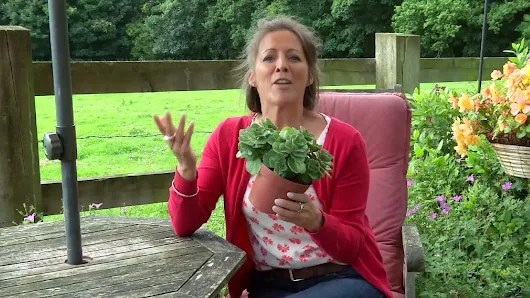http://www.listandindexsociety.org.uk/BritishFarmSurveys.pdf .
National Farm Survey (1941)
Between June 1940 and early 1941 some 85% of the agricultural area was
surveyed.
Once the short-term objective of increasing food production had been met, thought was given to implementing a more general National Farm Survey with the purpose of providing data to form the basis of post-war planning.
Every farm and holding of five acres (ranging from large farms to market and hop gardens) was surveyed and classified according to the physical condition of the land.
The
National Farm Survey was begun in the
spring of 1941 and largely completed by the
end of 1943, undertaken by
district committees who visited and inspected each farm and interviewed the farmer.
The records for each parish contain four printed forms:
C47 - A census return of
small fruit, vegetables, bulbs and flowers, and
stocks of hay and straw.
C51 - A census return of agricultural land providing details of
crops and grass acreage,
livestock numbers (including horses) and
labour employed on the farm.
SF - Additional census questions on
labour,
motive power such as horses and tractors,
rent payable, and how many
years the farmer had occupied the farm.
B496 - The
primary farm record, completed by an inspector for
farms of 5 acres or more.
https://www.badsey.net/history/farm_survey.htm
--------
The most recent of the Modern Domesdays had a rather different aim: it sought not to tax the rich, but
ensure the country could feed itself in the face of total war. With shipping under assault from German U-boats and facing the threat of Nazi invasion, Britain embarked on
‘Dig for Victory’. The
domestic side to this is well known:
rationing, allotments, parks dug up for growing vegetables. Less appreciated today is the effort that went into
identifying rural land that wasn’t being farmed, or that had
fallen into disuse during the agricultural depressions of the
late 19th century and interwar years.
To do so,
Churchill’s war ministry mandated a
National Farm Survey, overseen by the
new War Agricultural Committees set up to direct farming. The initial survey was carried out in
1940-41, followed by a larger, two-year survey intended to inform postwar planning, and seen at the time as a ‘Second Domesday’ (disregarding the various other modern Domesdays!).
https://whoownsengland.org/2017/03/05/a-guide-to-modern-domesdays/
--------
Though principally an investigation into land use, the National Farm Survey also
interrogated ownership and tenancy. It covered
all farms over 5 acres – around
320,000 farms in total – covering
99% of all agricultural land in England & Wales.
During WW2, food supplies from overseas were inevitably very limited. Farming and food production within the UK took on a renewed importance. Government information campaigns encouraging the public to make practical contributions to boosting food supplies used slogans such as
‘Dig for Victory’.
It was in this context that the
National Farm Survey was carried out. The survey collected detailed data about the use of land in England and Wales for agriculture and animal husbandry. It
covered all farms and market gardens larger than five acres (just over two hectares), a total of about
300,000 agricultural properties.
The information from the survey was originally used to
plan for food production once the war had ended. From the outset, it was also intended to be preserved permanently as a public record, comparable in scope to the famous
Domesday Book. Today, the records remain a useful and interesting source for researching the people, places and landscape of mid 20th-century England and Wales.
The National Farm Survey records
The ‘raw data’ of the survey consists of two sets of records: maps (record series MAF 73) and forms (record series MAF 32).
The maps are Ordnance Survey maps – or reduced-size copies of Ordnance Survey maps – annotated to show the location and extent of each farm. Depending on the scale used, there can be up to 16 map sheets in a portfolio.
The bundles of forms normally contain four separate forms for each farm. Three of them are ‘census’ forms completed by the farmer in June 1941. The fourth, called the primary farm record, was completed later by an inspector who visited the farm.
Each farm was assigned a number. This was marked on the relevant part of the map and on each of the forms to serve as a cross-reference between related records.
The individual farm records
Each individual farm record comprises up to four forms. Each form gives:
the name of the farmer and farm
the address
the parish
the individual farm code (see section 3)
Three of these forms were effectively an enlarged 1941 farm census return, posted to the farmer for him to complete on 4 June 1941. The three forms show details of:
small fruit, vegetables, and stocks of hay and straw
agricultural land
labour, engines, rent, and length of occupancy
The fourth form, the Primary Farm Survey, was completed by an inspector who visited the farm and interviewed the farmer. The Primary Farm Survey has four sections:
section A: ‘tenure’, stating whether the farmer was a tenant or owner, full or part time
section B: ‘conditions of farm’, assessing farm layout, soil type, condition of buildings and roads, and the degree of infestation with weeds or pests
section C: water and electricity provision
section D: ‘management’, in which the inspector had to classify the farm reflecting how a farmer managed his resources:
well (A)
fairly well (B)
badly (C)
If B or C were due not to old age or lack of capital but to ‘personal failings’, the inspector had to say what these were. This was to assess where farm management could be improved, but was naturally a controversial part of the survey.
------
Forty Hall estate, which is shown on sheet Middlesex II SE. About three-quarters of its 260½ acres were given over to grass. No fruit or vegetables were grown for human consumption apart from a small amount of potatoes, although root vegetables were grown for animal fodder. A variety of animals were raised: sheep, cattle, pigs, chickens and geese.
Only two of the farm’s nine workers were women. The workers had four horses to help with the labour and one tractor.
The land was not naturally good for farming – a quarter of it was considered to be of poor quality – but there were no infestations of pests. The state of the buildings, roads, fences and ditches was good. The arable land was fairly well kept and adequately fertilised but the pasture was in poor condition.




